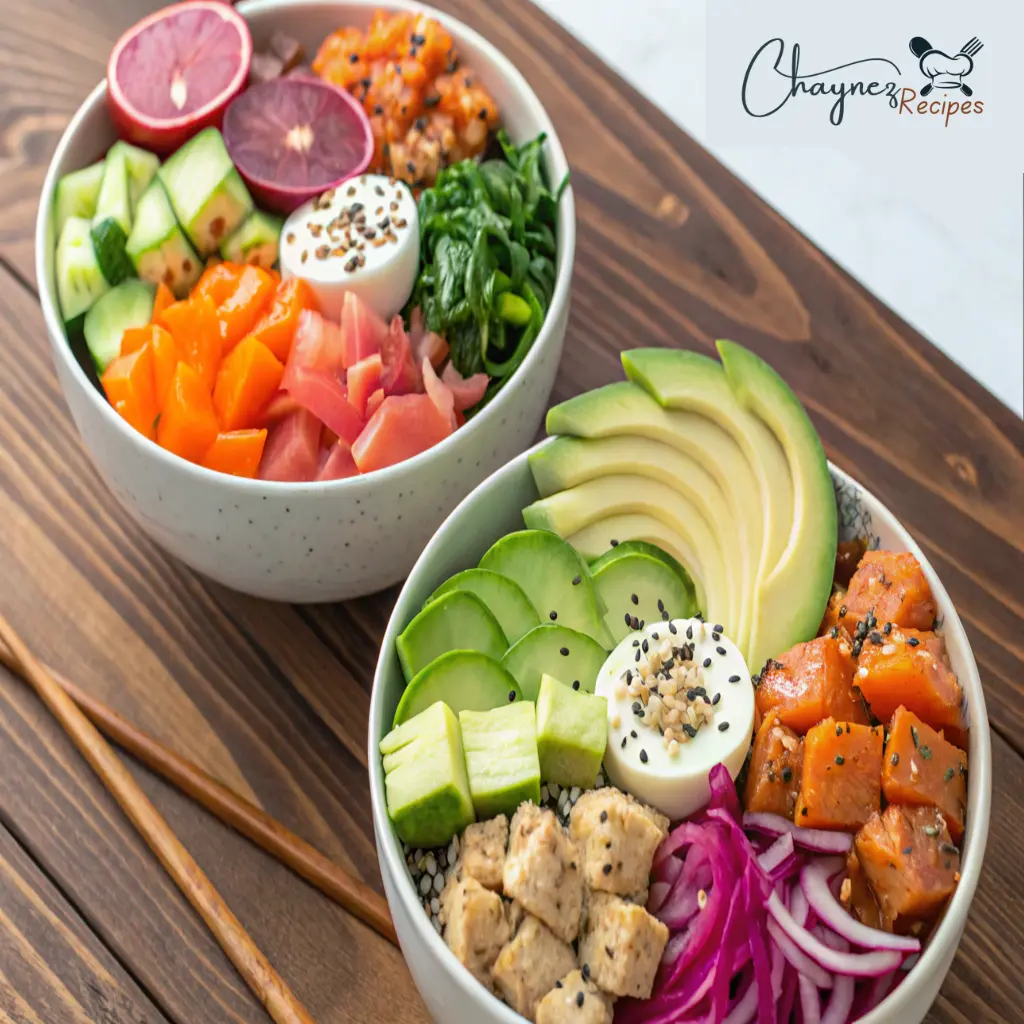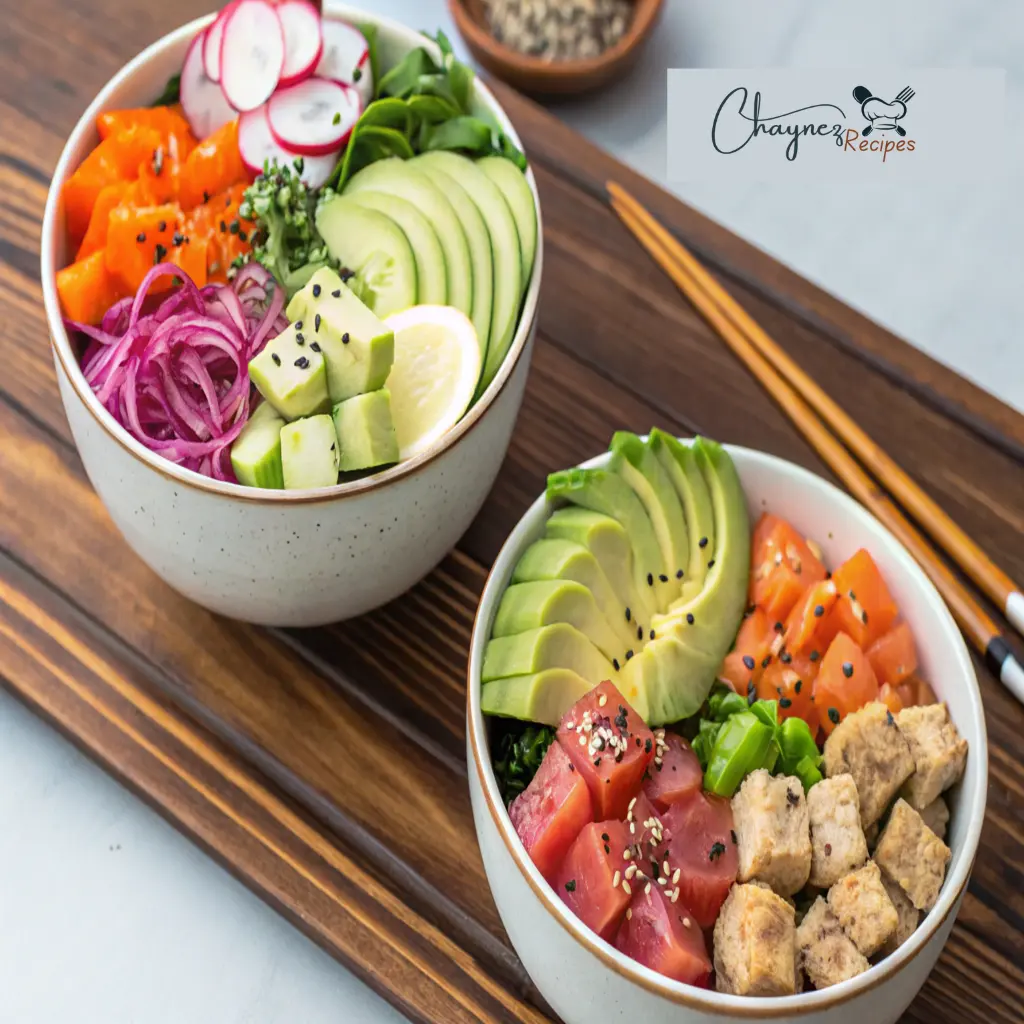Healthy eating trends have introduced an exciting variety of dishes that blend nutrition, flavor, and creativity. Among these, poke bowls and Buddha bowls stand out as two of the most popular options. While both are colorful, customizable, and packed with fresh ingredients, they cater to different tastes and preferences. If you’re curious about what is the difference between poke bowl and Buddha bowl, this article will guide you through their unique origins, ingredients, and benefits.
Understanding the differences between these two dishes is more than just culinary trivia; it’s about discovering which bowl aligns best with your dietary goals and lifestyle. Whether you’re drawn to the raw fish and oceanic flavors of the poke bowl or the plant-based, nutrient-packed Buddha bowl, knowing their distinctions can enhance your mealtime choices. Keep reading to explore what is the difference between poke bowl and Buddha bowl and how these bowls have captured the hearts (and stomachs) of food enthusiasts worldwide.
The Origins of Poke Bowl and Buddha Bowl
What Is a Poke Bowl?
A poke bowl is a traditional Hawaiian dish that has grown in popularity worldwide. The word “poke” means “to slice” in Hawaiian, referring to the diced raw fish that is its primary ingredient.
Key Characteristics of Poke Bowls:
- Base: Typically served over white rice, although brown rice or salad greens can also be used.
- Protein: Raw fish such as tuna, salmon, or octopus.
- Toppings: Includes seaweed, edamame, cucumber, avocado, and pickled vegetables.
- Sauces: Soy sauce, sesame oil, and spicy mayo are common options.
Poke bowls offer a balance of salty, umami, and slightly sweet flavors, making them a savory delight.
What Is a Buddha Bowl?
The Buddha bowl is a more recent creation rooted in the idea of balanced, plant based meals. It gets its name from the bowl’s round, “Buddha-like” appearance when filled to the brim with nutritious ingredients.
Key Characteristics of Buddha Bowls:
- Base: Often features quinoa, brown rice, or mixed greens.
- Protein: Typically plant based, such as chickpeas, tofu, or lentils, although some versions include grilled chicken or eggs.
- Vegetables: A mix of raw and roasted vegetables like sweet potatoes, kale, carrots, and beets.
- Sauces: Tahini, hummus, or citrus-based dressings add flavor.
The Buddha bowl’s focus on wholesome, colorful, and diverse ingredients embodies mindful eating.

Nutritional Differences Between Poke Bowls and Buddha Bowls
When asking what is the difference between poke bowl and Buddha bowl in terms of nutrition, there are notable distinctions. While both options can be healthy, their nutritional profiles vary depending on the ingredients used.
Poke Bowl Nutrition
- Protein-Rich: The raw fish in poke bowls provides high-quality protein and omega-3 fatty acids, which are essential for heart health.
- Lower in Fiber: Rice-based poke bowls may lack the fiber content found in Buddha bowls unless greens are added.
- Moderate Calories: Caloric content can increase with rich sauces and added toppings like avocado.
Buddha Bowl Nutrition
- High in Fiber: With an emphasis on whole grains, legumes, and vegetables, Buddha bowls are rich in dietary fiber.
- Plant Based Nutrients: They deliver a variety of vitamins, minerals, and antioxidants from plant based ingredients.
- Low in Fat: Generally, Buddha bowls contain less fat unless heavy dressings or oils are used.
Flavor Profiles and Ingredient Customization
Flavor Profile of Poke Bowls
The poke bowl emphasizes clean, fresh flavors. The raw fish is complemented by tangy and savory sauces, while the toppings add crunch and texture. Common seasoning ingredients include:
- Soy sauce for saltiness.
- Sesame oil for a nutty aroma.
- Wasabi for heat.
Flavor Profile of Buddha Bowls
The Buddha bowl leans towards earthy, wholesome flavors. With a variety of cooked and raw elements, these bowls often highlight natural sweetness and spiced undertones. Popular ingredients include:
- Sweet potatoes for a hint of sweetness.
- Tahini for creaminess.
- Spices like turmeric or paprika for warmth.
Preparation and Presentation
Poke Bowl Preparation
Making a poke bowl is relatively straightforward, but the freshness of the fish is paramount. Here’s how it’s typically prepared:
- Base Layer: Add rice or greens.
- Protein: Dice raw fish into cubes and marinate briefly.
- Toppings: Layer on vegetables, fruits, and seaweed.
- Sauce: Drizzle with your chosen dressing.
Buddha Bowl Preparation
Creating a Buddha bowl involves more cooking steps due to its roasted vegetables and grains. The process includes:
- Base Layer: Spread a mix of grains or greens.
- Cooked Ingredients: Roast vegetables and prepare legumes.
- Raw Elements: Add fresh vegetables or fruits.
- Sauce: Finish with a drizzle of dressing.

When to Choose a Poke Bowl or a Buddha Bowl
Why Choose a Poke Bowl?
- For seafood lovers: If you enjoy the delicate taste of fresh, high-quality raw fish like tuna or salmon, the poke bowl is an excellent choice. The fish is the centerpiece, delivering a unique blend of oceanic flavors.
- Quick and Convenient Meals: Poke bowls require minimal preparation and can often be assembled in under 15 minutes. This makes them perfect for busy individuals who want a nutritious meal without extensive cooking.
- Customizable for Low-Carb Diets: By substituting rice with a bed of mixed greens, you can transform a poke bowl into a low-carb option that still retains its refreshing and savory appeal.
- Rich in Omega-3s: The inclusion of raw fish like salmon or tuna provides essential omega-3 fatty acids, promoting heart and brain health.
Why Choose a Buddha Bowl?
- Ideal for Vegetarians and Vegans: The Buddha bowl is highly adaptable to plant-based diets, featuring ingredients like tofu, chickpeas, and roasted vegetables as protein sources.
- Perfect for Meal Prepping: Buddha bowls can be prepared in advance, stored in containers, and easily reheated. This makes them an excellent choice for those looking to maintain a healthy diet throughout the week.
- Bursting with Diverse Flavors: With endless combinations of grains, proteins, and vegetables, Buddha bowls cater to a wide variety of taste preferences. From sweet roasted carrots to tangy citrus dressings, there’s a flavor profile for everyone.
- Nutrient-Dense and Balanced: Packed with fiber, vitamins, and minerals, Buddha bowls support overall health and provide sustained energy throughout the day.
Environmental and Ethical Considerations
When evaluating what is the difference between poke bowl and Buddha bowl, it’s worth considering their environmental impact.
Poke Bowl Sustainability
Poke bowls rely heavily on seafood, which can have significant environmental implications if not sourced responsibly:
- Overfishing Concerns: High demand for popular fish like tuna and salmon can lead to overfishing, which disrupts marine ecosystems and threatens species populations.
- Bycatch Issues: Unsustainable fishing practices can result in the accidental capture of non-target species, further harming aquatic biodiversity.
- Carbon Footprint of Seafood: Transporting seafood from distant waters contributes to greenhouse gas emissions.
- Solutions: Choosing poke bowls made with sustainably sourced, certified fish (such as MSC or ASC certified) ensures minimal environmental impact. Local seafood options can also reduce the carbon footprint.
Buddha Bowl Sustainability
Buddha bowls, primarily plant-based, tend to have a significantly lower environmental impact:
- Reduced Resource Usage: Producing vegetables, legumes, and grains typically requires less water, land, and energy compared to animal-based foods.
- Seasonal and Local Ingredients: By using seasonal produce, Buddha bowls support local farmers and reduce the environmental costs associated with long-distance transportation.
- Lower Greenhouse Gas Emissions: Plant-based diets generate fewer emissions, making Buddha bowls a more eco-friendly choice overall.
- Minimal Waste: Leftover vegetables or grains can be easily repurposed, reducing food waste.
FAQs About Poke Bowl and Buddha Bowl
❓ Can a Buddha Bowl Include Meat?
Yes, while traditionally plant-based, Buddha bowls can include lean meats like grilled chicken or fish for added protein.
❓ Are Poke Bowls Safe to Eat During Pregnancy?
Poke bowls contain raw fish, which may carry risks for pregnant individuals. Opt for cooked fish or other protein alternatives to enjoy safely.
❓ What Makes a Poke Bowl Authentic?
Authentic poke bowls emphasize fresh, high-quality raw fish, minimal seasoning, and traditional Hawaiian ingredients like seaweed and soy sauce.
❓ Are Buddha Bowls Gluten-Free?
Buddha bowls can be made gluten-free by avoiding grains like wheat-based couscous and opting for gluten-free dressings.
❓ Can I Meal Prep Poke Bowls?
Poke bowls are best prepared fresh to maintain the quality of the raw fish. However, you can prep other components like rice and toppings in advance.
❓ What Is the Best Base for a Poke Bowl?
White rice is traditional, but you can use brown rice, quinoa, or salad greens for a healthier twist.
❓ How Can I Add More Protein to a Buddha Bowl?
Incorporate ingredients like tofu, tempeh, boiled eggs, or legumes such as chickpeas and lentils for a protein boost.
Conclusion: Poke Bowl and Buddha Bowl
The difference between poke bowl and Buddha bowl lies in their unique origins, ingredients, and nutritional focus, making each an exciting addition to any healthy eating journey. Poke bowls are perfect for seafood lovers who crave the freshness of raw fish combined with bold, oceanic flavors. On the other hand, Buddha bowls provide a plant-based, nutrient-dense experience for those seeking balanced and wholesome meals. Both bowls offer endless customization options, ensuring there’s a version to suit every palate and lifestyle.
Whether you’re looking for a quick and savory meal or a fiber-packed, plant-based dish, these bowls prove that healthy eating can be both flavorful and satisfying. Dive into the world of poke bowls and Buddha bowls to discover which one best fits your dietary goals, preferences, and values.
For more recipes that blend taste and nutrition, explore our collection:
- Try our indulgent Biscoff Cheesecake Bars for a sweet treat.
- Start your day with these easy and fluffy Vegan Banana Pancakes.
- Warm up with a comforting bowl of Alfredo Chicken Noodle Soup.
- Elevate your dinner game with this creamy and savory Steak Alfredo Recipe.
Don’t miss out on more great ideas for healthier baking and cooking. For additional tips, recipes, and updates, follow us on Chaynez Recipes to access our latest posts and social media links.






